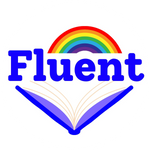Dictionary for the multilingual Parent
So…. you want to multilingual parent… Of course you do, you love your children and want to give them the best life… but where to start? Well, I have assembled a list of multilingual parenting #vocabulary so that YOU know what people are talking about when they are talking about multilingual parenting.
First off —>
Styles of Multilingual Parenting:
There are several methods for multilingual parenting, and the best one for you and your family will depend on your goals, lifestyle, and the languages involved. Here are a few of the common methods:
One Parent, One Language (OPOL): This method involves each parent speaking only one language to the child. For example, one parent speaks Spanish while the other speaks English.
Minority Language at Home (ML@H): With this method, the family speaks the minority language at home, while the majority language is used outside of the home. For example, a Spanish-speaking family living in the United States might speak Spanish at home and English outside the home.
Time and Place (T&P): This method involves using one language at specific times or in certain places. For example, the family might speak French at the dinner table or only speak Mandarin during family outings.
Language Mixing: This method involves mixing languages in conversation, often within the same sentence or phrase. This is common in multilingual communities, where people may switch between languages naturally.
Language Immersion: This method involves immersing the child in a specific language environment, such as through a language immersion school or travel to a country where the language is spoken.
It's important to note that there is no one-size-fits-all approach to multilingual parenting, and families may use a combination of these methods or create their own unique approach.
NEXT!
The Basics
These are just the words you need to know.
Mother tongue - the language that a person has grown up speaking from childhood
Bilingual - a person who speaks two languages fluently
Multilingual - a person who speaks multiple languages fluently
Language acquisition - the process of learning a language, especially a first language in childhood
Language immersion - a method of language learning where the learner is surrounded by the language they are learning.
Code-switching - the act of switching between two or more languages or language varieties in a conversation or sentence.
Language barrier - the difficulty that arises when people who speak different languages cannot understand each other
Heritage language - a language that is passed down through generations of a family or community
Linguistic diversity - the existence of multiple languages in a particular region or community
Translation - the process of converting written or spoken words from one language into another.
I hope this helps you get a sense of what you are in for. Happy multilingual parenting!
Pssst… If your looking for some more in depth insights to this lifetime long job… Check out our store. We carry #multilingualparenting books as well as a host of helpful tools and resources.


